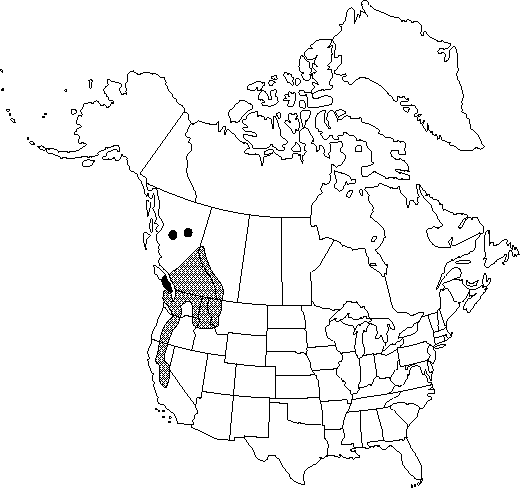Anemone occidentalis
Proc. Amer. Acad. Arts 11: 121. 1876.
Aerial shoots 10-60 (-75) cm, from caudices, caudices ascending to vertical. Basal leaves (2-) 3-6 (-8), primarily 3-foliolate with each leaflet pinnatifid to dissected; petiole 6-8 (-12) cm; terminal leaflet petiolulate, ovate in outline, (2.5-) 3-6 (-8) cm, base cuneate, margins pinnatifid to dissected throughout, apex narrowly acute, surfaces villous; lateral leaflets 2×-parted, pinnatifid; ultimate segments 2-3 mm wide. Inflorescences 1-flowered; peduncle woolly or densely villous, glabrate; involucral-bracts 3, occasionally more, 1-tiered, ±similar to basal leaves, 3-foliolate, ovate in outline, bases distinct; terminal leaflet petiolulate, 2.5-7 cm (2.5 cm in flower, 7 cm or less in fruit), margins pinnatifid throughout, apex narrowly acute, surfaces villous; lateral leaflets 2×-parted, pinnatifid; ultimate segments 2-3 mm wide. Flowers: sepals 5-7, white, tinged purple (rarely abaxially blue proximally, white distally, and adaxially white), ovate to obovate, rarely elliptic, 15-30 × 10-17 (-19) mm, abaxially hairy, adaxially glabrous; stamens 150-200. Heads of achenes spheric, rarely cylindric; pedicel 15-20 (-22) cm. Achenes: body ellipsoid, 3-4 × ca. 1.5 mm, not winged, villous; beak curved or recurved, reflexed with age, (18-) 20-40 (-50) mm, long-villous, plumose. 2n=16.
Phenology: Flowering spring–summer (May–Aug/Sep).
Habitat: Gravelly, rocky slopes, moist meadows
Elevation: 500-3700 m
Distribution

Alta., B.C., Calif., Idaho, Mont., Oreg., Wash.
Discussion
W. J. Hooker (1829) included Anemone occidentalis in his concept of Anemone alpina Linnaeus.
The Thompson Indians and the Okanagan used decoctions prepared from the roots of Anemone occidentalis to treat stomach and bowel troubles (D. E. Moerman 1986).
Selected References
None.
Lower Taxa
"villous" is not a number.